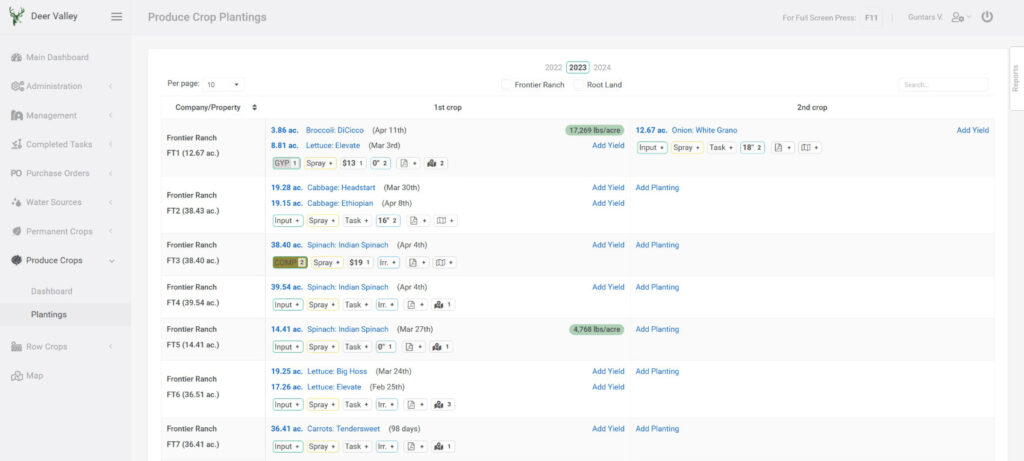Today is May 1st of 2023. Therefore, it just makes sense to write a blog post about Lettuce. To be more specific, this post will be about growing lettuce.
First, let me mention that the month of May is unofficial Lettuce Month. You can read more about Lettuce Month in this article. Lettuce month is mostly about elevating awareness, about healthy eating. Did you know that lettuce is an excellent source of beta carotene (vitamin A) which is needed for healthy skin, bones, and eyes?
Three good reasons to track data when growing lettuce
- It helps farmers to monitor the growth of their crops and identify any issues that may arise. This can include problems with pests, disease, or other environmental factors that may affect the growth of the lettuce. By tracking data on the growth of their crops, farmers can take steps to address these issues and ensure that their crops are healthy and productive.
- Data tracking can help farmers to optimize their farming practices. By analyzing data on the growth of their crops, farmers can identify which practices are most effective and adjust as needed. This can include changes to irrigation schedules, fertilization practices, or other factors that may affect the growth of the lettuce.
- Tracking lettuce crop data will help farmers to improve the quality of their crops. By monitoring data on the growth of their crops, farmers can identify which varieties of lettuce are most productive and which have the best flavor and texture. This can help them to make informed decisions about which varieties to grow in the future and how to optimize their growing practices to produce the best possible crops.
How AgNote can help lettuce growers with data tracking.
AgNote includes a dedicated Produce Crop (vegetable crop) management area. Here are few things which make AgNote’s Produce Crop management area unique:
- Field Splitting. Many vegetable growers grow multiple crops and varieties in the same field. In the Produce Crop management area, you can split fields and track them separately.
- Manage multiple crop plantings per year.
- Plan for the upcoming vegetable season.


AgNote also includes many functionalities which help farmers to track crop data when growing lettuce. Here are just a few to mention:
- Each planting can be marked as Organic. The Organic mark will show up on many reports and field maps.
- Detailed spray material and completed task information can be tracked for each planting.
- Save test or certification documentations for applied inputs.
If you are lettuce (vegetable) grower, and would like to try out AgNote, you can do so. Just register for a free seven-day trial and take AgNote for a test spin.